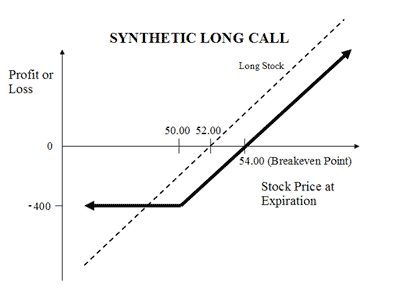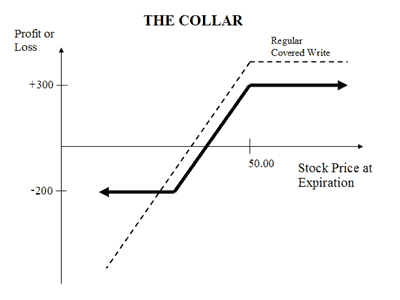 Zerodha (Trading & Demat Account)
Zerodha (Trading & Demat Account)
FREE Equity Delivery and MF
Flat ₹20/trade Intra-day/F&O
 Zerodha (Trading & Demat Account)
Zerodha (Trading & Demat Account)
FREE Equity Delivery and MF
Flat ₹20/trade Intra-day/F&O

|
|
Compare Synthetic Call and Collar options trading strategies. Find similarities and differences between Synthetic Call and Collar strategies. Find the best options trading strategy for your trading needs.
| Synthetic Call | Collar | |
|---|---|---|
 |
 |
|
| About Strategy | A Synthetic Call strategy is used by traders who are currently holding the underlying asset and are Bullish on it for the long term. But he is also worried about the downside risks in near future. This strategy offers unlimited reward potential with limited risk. The strategy is used by buying PUT OPTION of the underlying you are holding for long. If the price of the underlying rises then you make profits on holdings. If it falls then your loss will be limited to the premium paid for PUT OPTION. | A Collar is similar to Covered Call but involves another position of buying a Put Option to cover the fall in the price of the underlying. It involves buying an ATM Put Option & selling an OTM Call Option of the underlying asset. It is a low risk strategy since the Put Option minimizes the downside risk. However, the rewards are also limited and is perfect for conservatively Bullish market view. Suppose you are holding shares of SBI currently trading at Rs 250. You can deploy a collar strategy by selling a Call Option of strike price Rs 300 while at the same time purchasing a Rs 200 strike price Put option. If the price rises to Rs 300, your benefit from increase in value of your holdings and you will lose net premiums. If the price falls... Read More |
| Market View | Bullish | Bullish |
| Strategy Level | Beginners | Advance |
| Options Type | Call + Underlying | Call + Put + Underlying |
| Number of Positions | 2 | 3 |
| Risk Profile | Limited | Limited |
| Reward Profile | Unlimited | Limited |
| Breakeven Point | Underlying Price + Put Premium | Price of Features - Call Premium + Put Premium |
| Synthetic Call | Collar | |
|---|---|---|
| When to use? | A Synthetic Call option strategy is when a trader is Bullish on long term holdings but is also concerned with the associated downside risk. |
The Collar strategy is perfect if you're Bullish for the underlying you're holding but are concerned with risk and want to protect your losses. |
| Market View | Bullish |
Bullish When you are of the view that the price of the underlying will move up but also want to protect the downside. |
| Action |
The strategy is used by buying PUT OPTION of the underlying you're holding for long. If the price of the underlying rises then you make profits on holdings. If it falls then your loss will be limited to the premium paid for PUT OPTION. |
|
| Breakeven Point | Underlying Price + Put Premium |
Price of Features - Call Premium + Put Premium |
| Synthetic Call | Collar | |
|---|---|---|
| Risks | Limited Maximum loss happens when price of the underlying moves above strike price of Put. Max Loss = Premium Paid |
Limited You will incur maximum losses when price of the underlying is less than the strike price of the Put Option. Max Loss = Purchase Price of Underlying - Strike Price of Long Put - Net Premium Received |
| Rewards | Unlimited Maximum profit is realized when price of underlying moves above purchase price of underlying plus premium paid for Put Option. Profit = (Current Price of Underlying - Purchase Price of Underlying) - Premium Paid
|
Limited You will incur maximum profit when price of underlying is greater than the strike price of call option. Max Profit = Strike Price of Short Call - Purchase Price of Underlying + Net Premium Received |
| Maximum Profit Scenario | Underlying goes up |
Underlying goes up and Call option exercised |
| Maximum Loss Scenario | Underlying goes down and option exercised |
Underlying goes down and Put option exercised |
| Synthetic Call | Collar | |
|---|---|---|
| Advantages | Provides protection to your long term holdings. |
It protects the losses on underlying asset. |
| Disadvantage | You can incur losses if underlying goes down and the option is exercised. |
The profit is limited |
| Simillar Strategies | Married Put | Covered Put Bull, Call Spread, Bull Put Spread |

Add a public comment...

FREE Intraday Trading (Eq, F&O)
Flat ₹20 Per Trade in F&O
|
|